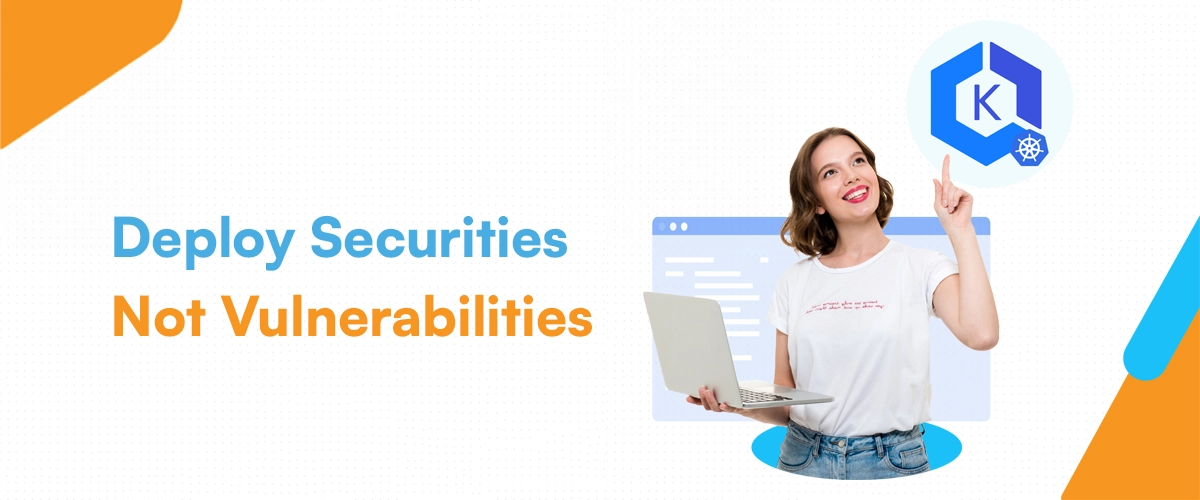
When it comes to running workloads on Kubernetes — especially on Amazon EKS — security is no longer a checkbox to be ticked at the end of the pipeline. It needs to be an integral part of the development and deployment lifecycle, right from the first line of code.
This is where DevSecOps comes in: a cultural and technical approach that integrates security practices into every stage of your DevOps processes. But how can we truly secure EKS workloads from day one? Let’s explore this.
Key security challenges in Kubernetes and EKS
Kubernetes is powerful and flexible, but with great power comes great complexity. Some of the most common security challenges teams face include:
Misconfigured permissions
Kubernetes offers powerful role-based access control (RBAC). However, if not configured properly, it can lead to excessive permissions, exposing the cluster to internal and external
threats.
Container image vulnerabilities
Teams often pull images from public repositories without validating them. These images may contain vulnerabilities that can be exploited in production.
Network exposure
Kubernetes services and ingress controllers can unintentionally expose workloads to the public internet, making them easy targets.
Secrets management
Many teams store secrets (like API keys, credentials) in plain text within config files or environment variables, leading to potential leaks.
Lack of runtime security
Even if your workloads are secure at deployment, attacks can still happen during runtime through container escapes or compromised processes.
How CloudLaunchpad enhances security best practices
Many organizations rely on in-house frameworks or community tools to secure their Kubernetes workloads. However, integrating a robust foundation like CloudLaunchpad can significantly improve the security posture from day one.
Cloud Launchpad provides pre-built modules and automation scripts that integrate security into the EKS lifecycle. Here’s how it helps:
Automated baseline configurations: Enforce secure defaults for networking, node groups, IAM policies, and logging from the start.
Integrated scanning tools: Automate image scanning to detect vulnerabilities before containers reach production.
RBAC and policy as code: Define and apply RBAC configurations and network policies as code, making them version-controlled and auditable.
Centralized secrets management: Integrates with AWS Secrets Manager or HashiCorp Vault, eliminating hard-coded secrets.
Continuous compliance checks: Run compliance checks against standards like CIS Benchmarks or AWS best practices.
By leveraging Cloud Launchpad, teams can adopt a “security first” mindset without sacrificing agility and developer productivity.
Automating security policies, IAM, and encryption
Automation lies at the heart of DevSecOps. Here’s how you can embed security deeply and consistently in your EKS workloads:
Policy as code
Using tools like OPA (Open Policy Agent) or Kyverno, you can define security policies declaratively and enforce them automatically. Examples include blocking privileged containers or ensuring all pods have resource limits.
IAM automation
Instead of manually assigning IAM roles, you can automate them using Terraform, AWS CDK, or CloudFormation. This ensures least-privilege access and avoids human error. In EKS, using IAM roles for service accounts (IRSA) allows pods to securely access AWS services without static credentials.
Encryption everywhere
Enable encryption at multiple layers:
● Data at rest: Use AWS KMS to encrypt EBS volumes and S3 buckets.
● Secrets encryption: Configure envelope encryption for Kubernetes secrets using a KMS provider.
● Data in transit: Enforce TLS for all communications between services and ingress traffic.
Conclusion
Securing Kubernetes workloads on Amazon EKS requires a proactive approach that begins on day one. By adopting DevSecOps practices early, organizations can embed security into every stage of the application lifecycle, reducing risks and strengthening compliance.
Leveraging automation for security policies, implementing robust IAM configurations, and ensuring comprehensive encryption are key steps toward building a secure and resilient environment.
Solutions like Cloud Launchpad make this journey even smoother by providing pre-built security modules, integrated best practices, and automated compliance checks, enabling teams to focus on delivering value while maintaining a strong security posture.
Ultimately, by making security a shared responsibility and integrating it from the start, organizations can build scalable, reliable, and secure cloud-native applications with confidence.


